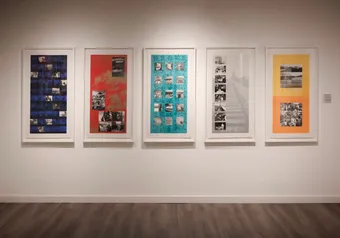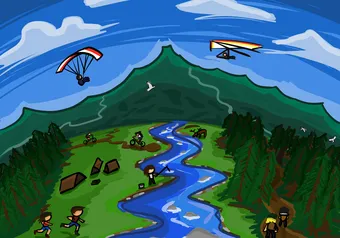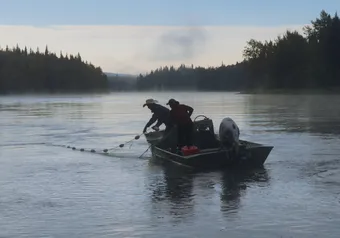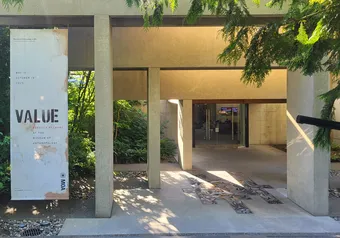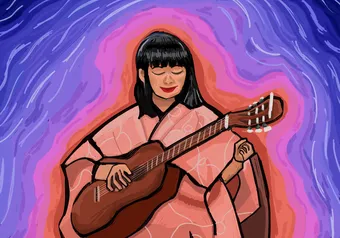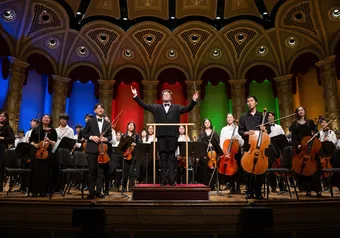I am not understanding the assignment at all, and my sociological imagination must be broken. Like all students who care too much about succeeding, I go to my prof’s office hours.
Office hours are 1:15 to 2:15 p.m. in ANSO 240
I trek across campus, past the people taking profile pictures at the Rose Garden, dodge traffic on Marine Drive, and walk up to the heavy wooden doors. This building is old. Not old in the same way that the math building is old; more like a vintage jacket that still smells like the ’60s. The low ceiling combined with the wide entrance hall makes me feel boat-sick. There’s a table covered in back issues of obscure journals, free for the taking. There’s a lounge where students actually look like they’re studying.
I try heading down a hallway. The wood fittings on the lights make it feel like the bunker from Lost, or one of those Italian daycares. The walls have two aesthetics: covered in socialist organization posters or completely bare. I get lost down a hall and at the end is the archeology office. Do they make you search for the archeology office to be ironic? There’s another lounge and a set of all-glass offices. Is it a separate department? Can I walk through it? This building is a labyrinth.
I check my phone — I’ve missed the office hours.
The Anthropology and Sociology building has a history almost as old as the university. The space where it and the Museum of Anthropology stand was previously an army base. Built to protect Point Grey against a Pacific attack, the project was completed almost overnight in 1939. The base was named Fort Camp, which may sound familiar because that’s also the name of the lounge in Gage.
The army barracks and anti-ship batteries were bought by UBC in 1946, after it was pretty obvious that no one needed to be worrying about a Pacific attack. It was said to be just “Six long huts, a mess-hall, and a few smaller buildings,” before more huts were brought from the Tofino army base to make much-needed campus housing for the post-war boom.
Yeah, you think Totem is bad? Imagine having to stay in an army hut on the side of a cliff. And heating pipes for the building only came in after Christmas. So, a cold army hut on the side of a cliff.
Some of the rooms in the bunk-house were “Six by eight feet in size” with a “Ratio of space to weight only slightly better than guinea-pig cages.” In 1954 the residence had 399 “single men” and 156 “single women” in the new Fort Camp building. One section of the residence had 65 residents but only “two wash-basins, two mirrors and one toilet.”
One toilet... for 65 people.
Other than the obviously poor hygiene standards, legend says it was a pretty #lit place. One Ubyssey article says “Students would sometimes hold parties in the tunnels.” UBC archives have a bizarre photo of some students being carried on stretchers and being doused by buckets of water titled “Fort Camp festivities.” Maybe that was what fun was before the internet?
The building currently known as ANSO was specifically built as a set of women’s residence halls between 1950-51, with architectural drawings from 1949. The buildings were each named after women who were important to the early days of the university. Anne Wesbrook, wife of first university president Frank Fairchild Wesbrook, Isabel MacInnes, the first woman to be appointed to the Faculty of UBC and Mary Bollert, the first “Dean of Women” at the University. (Mary Bollert Hall is still called that, and is used by the Development Office). The rooms were painted “different shades of pastel with floor tiles in matching colours” which sounds more disorientation than calming but, you know, sort of like in a very “feminine” way. The buildings each cost $164,890 to build, which is $1,670,462.52 in today’s money.
Most of Fort Camp was destroyed to make way for the new Museum of Anthropology. Some large sections of the giant guns were kept and the museum was built around them. The Bill Reid sculpture, “The Raven and the First People,” is mounted on top of one of these gun platforms.
While the remnants of the original Fort Camp huts are gone, the women’s residence halls were kept and repurposed.
The Anthropology department was established in 1947 by Harry Hawthorne. Before its founding the department was under the umbrella faculty of the department of economics, sociology and political science. The sociology department had been a part of the university since its founding in 1915 but didn’t offer a single class until 1921.
The first BA in the subject was granted to Katherine Ethel Chapman (who the Chapman Learning Commons is partially named after) in 1937. Originally the Anthropology department included sociology and criminology but then criminology joined the department of social work.
By 1958 the department had 20 faculty members and in 1959 it was officially renamed to Anthropology and Sociology. Classes and offices were scattered across campus, with the original Museum of Anthropology situated in the basement of what is now the Irving K. Barber Learning Centre. Faculty offices for anthropology could be found in the former Ponderosa, the Angus building and “various huts.”
The consolidation of the department came around the same time as the opening of the new MoA in 1976. The newly renovated ANSO had “three new laboratories, lounges, conference rooms, teaching and seminar rooms, and a library.”
The ’70s is when the two departments started to divide. As the each gained its own spaces, more students, and faculty, the anthropology department became a “More bureaucratic, committee-based, Robert’s Rules of Order-style of democracy.”
Separation of the two departments finally came in 1982 after an external review. The separation meant increased autonomy for the sociology department but the hiring and tenure process was still conducted by the department as a whole.
While Fort Camp was a rowdy place, ANSO also has its stories. The building is said to be slightly haunted, with rumors of dorm suicides and questionable boxes of possible human bones in spooky dungeon-like basements.
“So I can pretty well confirm... to dispel that rumour… Now it’s just animal bones and shells,” said Brian Thom, a UBC anthropology student from 1988 to 1994 and currently associate professor of Anthropology at UVic. “I know that there used to be other kinds of bones there, but when the big museum renovation happened they made a special facility to store all the human remains.”
Thom talked about ANSO being a place to experience the then-new technology of email at UBC.
“You had to go to a terminal on campus somewhere and log in to the Unix system. From there you could communicate by email through this archaic client called Pine.”
The terminals were not very common on campus.
“You didn’t have it in your pocket where you just check your emails … people would go into ANSO and there would be these terminals for Pine ... so you’d just sit down in the lower levels there and check your emails and other people would be down there and we’d talk to each other and it became kind of a social place around the green and black monitors, kind of like you’d see in the Matrix. Your email would come up nice and slow on it.”
When asked about the so-called spooky dungeons, Thom said: “So if you go past the Swamp and down another corridor and duck your head in, you get in to this really truly basement part of the building with no windows, lights on a string kind of thing ... all the archeology lab equipment was stored down there. The buckets and the screens and the surveying gear and boxes of soil samples [that were] all down there in this kind of creepy area that basically nobody went to other than a couple times a year when they had to deal with the lab equipment…”
Thom had a specific memory of the dungeon that lasted with him.
“So I remember going down there with Joyce Johnson, the woman who was running the archaeology lab, and ... one summer she was getting rid of all of the late Carl Borden’s archaeology equipment [and] there was this one long measuring tape it was like [a] 100 metre measuring tape in a beautiful leather case and it went into the garbage ‘cause the tape had all rotted and frayed. but I managed to pull the tape out of the garbage and string it up with a new line and I still use it to this day.”
While the Pine Terminals and pastel painted rooms are long gone, the ANSO building is still a hoppin’ place. The endlessly confusing building holds a rich history of student life, from a military camp to desperately needed housing to a studious, bunker-like department.
The light shines into the the ANSO undergraduate student lounge, giving a warm, inviting presence to the reinforced concrete building. I guess I’ll just email my professor about the assignment.
First online
Share this article


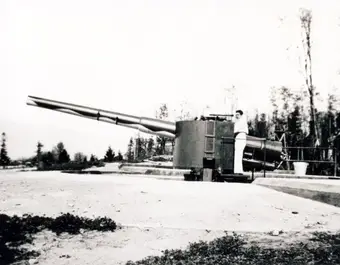
![['']](https://storage.googleapis.com/ubyssey/media/renditions/courtesy_peter_moogk.width-1000.format-webp.webp)
![['']](https://storage.googleapis.com/ubyssey/media/renditions/1.0136813.width-1000.format-webp.webp)
![['']](https://storage.googleapis.com/ubyssey/media/renditions/courtesy_public_archives_of_cana.width-1000.format-webp.webp)
![['']](https://storage.googleapis.com/ubyssey/media/renditions/courtesy_peter_moogk_2.width-1000.format-webp.webp)
